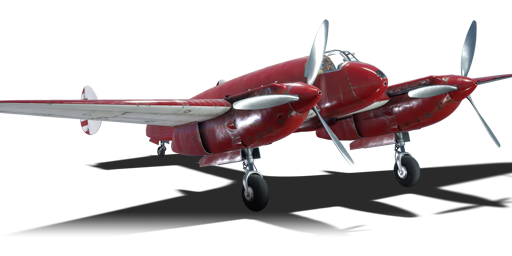

Aviation
I-29
II
Rank
AB
2.7
RB
3.0
SB
2.3
Battle rating
USSR
Research country
Fighter
Main role

Premium vehicle
Status
General information
The I-29 is a premium gift Soviet twin-engine fighter. It was introduced during Update 1.73 "Vive la France" as part of a reward vehicle for War Thunder's 5th anniversary mini-event. It was also a reward of the "10 rare vehicles" event during War Thunder's 10th Anniversary in 2022.
The I-29 is an excellent high-speed twin-engine heavy fighter produced by the Yakovlev Design Bureau. This aircraft was developed during the pre-war years and had many promising innovations.
Where to purchase
Camouflages
Flight performance
Max speed
at 5,200 m
556519578537 km/h
Rate of Climb
1511.718.911.7 m/s
Turn time
2122.520.221.9 s
Max altitude
10,800 m
Takeoff Run
340 m
Landing
flaps
flaps
Take-off
flaps
flaps
Combat
flaps
flaps
Air
brake
brake
General characteristics
Crew
1 person
Engine
Length
9.8 m
Wingspan
14 m
Wing Loading
166 kg/m²
Weight:
Base weight
4.244.384.134.35 t
Fuel in main tanks
0.94 t (1h 35m)
Limits:
Max Speed Limit (IAS)
680 km/h
Mach Number Limit
0.75 M
G limit
≈ -10/18 G
Flap Speed Limit (IAS)
280 km/h
Gear Speed Limit (IAS)
320 km/h
Offensive armament
2 × 20 mm ShVAK cannon
Ammunition
240 rounds
Fire rate
800 shots/min
One-second Burst Mass
1.29 kg
| Belt | Belt filling | Armor penetration (mm) at a distance: | |||||
|---|---|---|---|---|---|---|---|
| 10 m | 100 m | 500 m | 1000 m | 1500 m | 2000 m | ||
| FI-T/AP-I | 28 | 24 | 14 | 7 | 4 | 2 | |
| FI-T/HEF/AP-I/FI-T | 28 | 24 | 14 | 7 | 4 | 2 | |
| HEF/FI-T/AP-I | 28 | 24 | 14 | 7 | 4 | 2 | |
| FI-T | 4 | 4 | 4 | 4 | 4 | 4 | |
| AP-I/FI-T/AP-I/AP-I | 28 | 24 | 14 | 7 | 4 | 2 | |
| AP-I/HEF/HEF/FI | 28 | 24 | 14 | 7 | 4 | 2 | |
3 × 7.62 mm ShKAS machine gun
Ammunition
2,700 rounds
Fire rate
1,800 shots/min
One-second Burst Mass
0.29 kg
| Belt | Belt filling | Armor penetration (mm) at a distance: | |||||
|---|---|---|---|---|---|---|---|
| 10 m | 100 m | 500 m | 1000 m | 1500 m | 2000 m | ||
| T/Ball/Ball/AP-I/AI | 13 | 12 | 7 | 3 | 2 | 0 | |
| AP-I/AI/API-T | 13 | 12 | 7 | 3 | 2 | 0 | |
| AP-I/API-T | 13 | 12 | 7 | 3 | 2 | 0 | |
| AP-I/AP-I/AP-I/AI | 13 | 12 | 7 | 3 | 2 | 0 | |
Economy
Repair cost
AB
560 

RB
477 

SB
602 

Crew training
2,300 

Experts
15,000 

Aces
125 

Research Aces
320,000 

Reward multiplier
AB / RB / SB
 2 x (30 / 60 / 120) %
2 x (30 / 60 / 120) % 
 2 x 112 %
2 x 112 % 

Premium vehicle
All modifications are unlocked
Flight performance | |
|---|---|
Survivability |
|---|
Weaponry |
|---|
Rating by players
You must play more than 3 battles for the last week and more than 10 battles in a vehicle to rate it.
Like:
24
Flight performance:
Not enough ratings
Survivability:
Not enough ratings
Aerial combat:
Not enough ratings
Ground attack:
Not enough ratings
Balance:
Not enough ratings
Tips & Tricks
This space is currently empty
Do you know any interesting vehicle features?
Loading...
No articles about this vehicle yet
Become the first author and get rewards!
Write a guide, tell about interesting historical facts, make a tutorial or simply an interesting post.
No more content